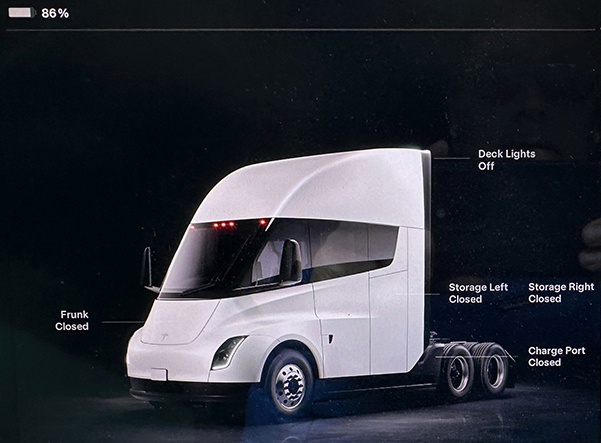March 2024. Sacramento.
Electric semi-trucks are showing up on the roads. Last week while driving to work I noticed a Tesla Semi parked in front of a convenience store. I swung into the parking lot and spoke with the driver for 15 minutes. Here’s what I learned:
The driver said he’d been driving the Semi for 3 months delivering Pepsi products around the Sacramento area. He went through 3 weeks of training before getting on the road to make deliveries. He said he really enjoys driving the Semi, but he’d never driven an EV before. I asked if he wanted to take a spin in my Model 3 and he considered it for a couple seconds, but said he had to keep on his delivery schedule.
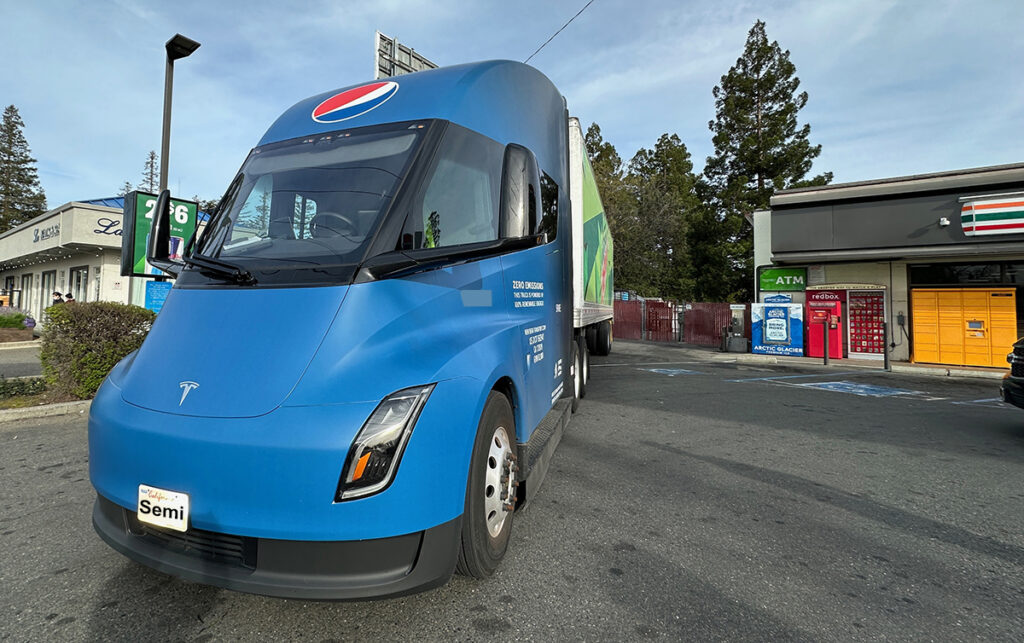
He didn’t know the size of the battery pack, but said rated range was 450 miles. He estimated that Pepsi drivers were getting around 425 miles in the real world. According to Tesla’s website the Semi consumes 2 kWh per mile, which puts the battery pack at ~ 900 kWh, as many have reported over the past couple years. At 2 kWh per mile, the Semi uses 10X more energy than I use to drive my EV – but remember that fully loaded this truck weighs 20X more than a car – so 2000 Wh/mile is pretty good for such a large vehicle.
The driver said in the beginning there were problems with the pack overheating, but that issue had been solved. He also told me it only took 35-40 minutes to fully charge the massive 900 kWh battery pack on their Megacharger. I’ve seen that reported before, but it’s still shocking considering the size of the pack. Elektrek has described Megachargers with output ranging from 375 kW up to 1000 kW, and I believe the Pepsi plant has 750 kW chargers that make the short charge time possible.
The Cabin
I asked if I could take a few pictures, he said sure, and that I could get in and check it out. So I climbed up, sat in the driver’s seat, looked around, and got a feel for the layout. The screens and User Interface will look familiar to anyone driving a Tesla. The two screens on either side of the steering wheel appeared to be the same as those in a Model 3. The temptation to put this thing in drive was strong – back in the ’80s I drove a 30 foot long International Harvester dual-axel truck for a lumber yard so I was curious. But I do live in the real world, so no.
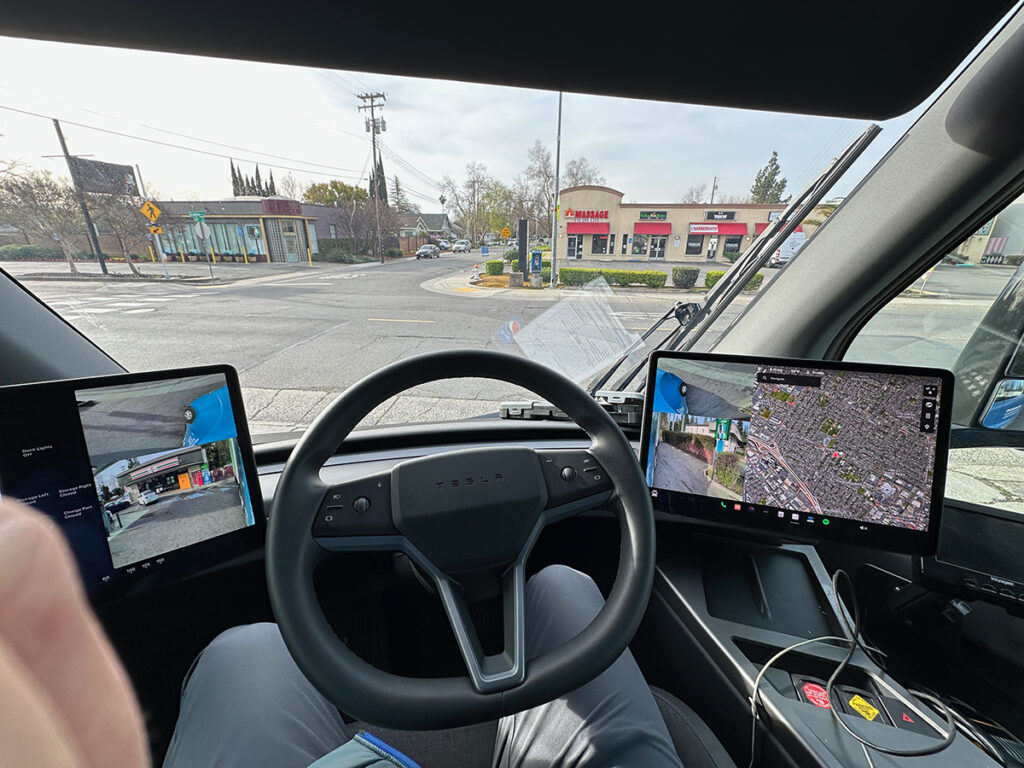
The driver’s seat is in the middle of the cabin, and it’s very comfortable. It felt a lot like the air-ride seat in the truck I drove where I could adjust air pressure to raise or lower the seat and make the ride soft or firm.
The screen on the right displayed navigation and right-side camera views; the screen on the left showed info on storage compartments, tire pressure, lights, and left-side camera views. I don’t know if information shown on the screens changes after you put the truck in Drive.
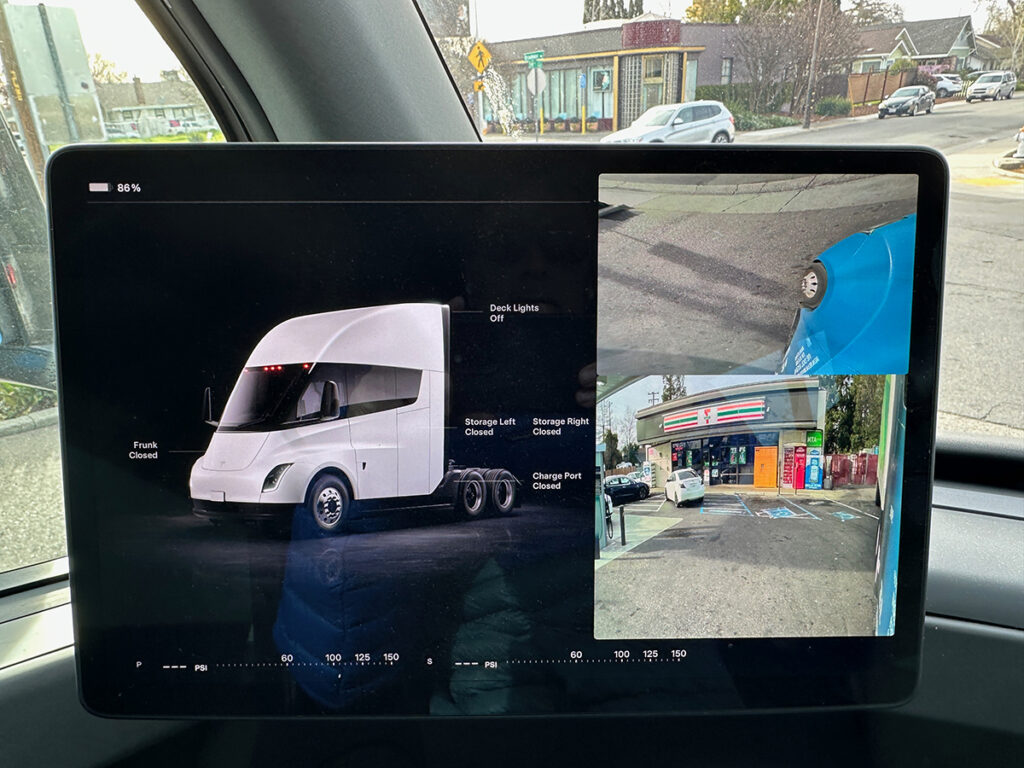
The cabin is huge. I took the pic below while standing up in the cabin. There’s a jump seat behind the driver on the right – for trainers or co-workers. The driver said that as far as he knew Tesla doesn’t offer models with a sleeper cab for long distance haulers.
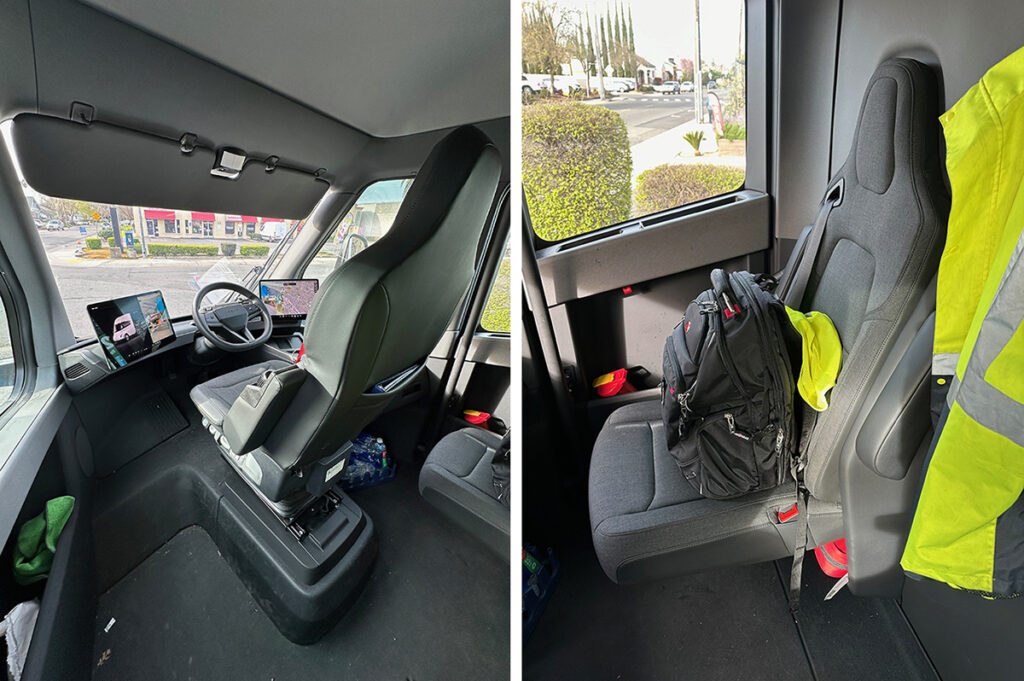
After I got out, I asked the driver if there was anything he would improve, and he immediately said he wanted better rearview vision. 30+ years ago when I drove a truck, you learned to live and drive with the sideview mirrors. You had to constantly check the mirrors to know what traffic and objects were around you. Today, properly placed video cameras should provide the views you need for backing up and driving safely.
Speaking of views, the sloped nose of the Semi improves aerodynamics and gives the driver a better view of the front of the truck. This is very different from many semis where you have to look over an enormous hood and the radiator that cools the massive diesel engine. When I was driving a truck I had absolutely no view of the front of my truck. For parking, driving through job sites, and driving in traffic I just learned where the front of the truck was and managed not to hit anything. Video cameras take the guesswork out of that equation. In fact, the Semi has cameras that show the front corners of the truck (check out the driver’s screens in pics above).
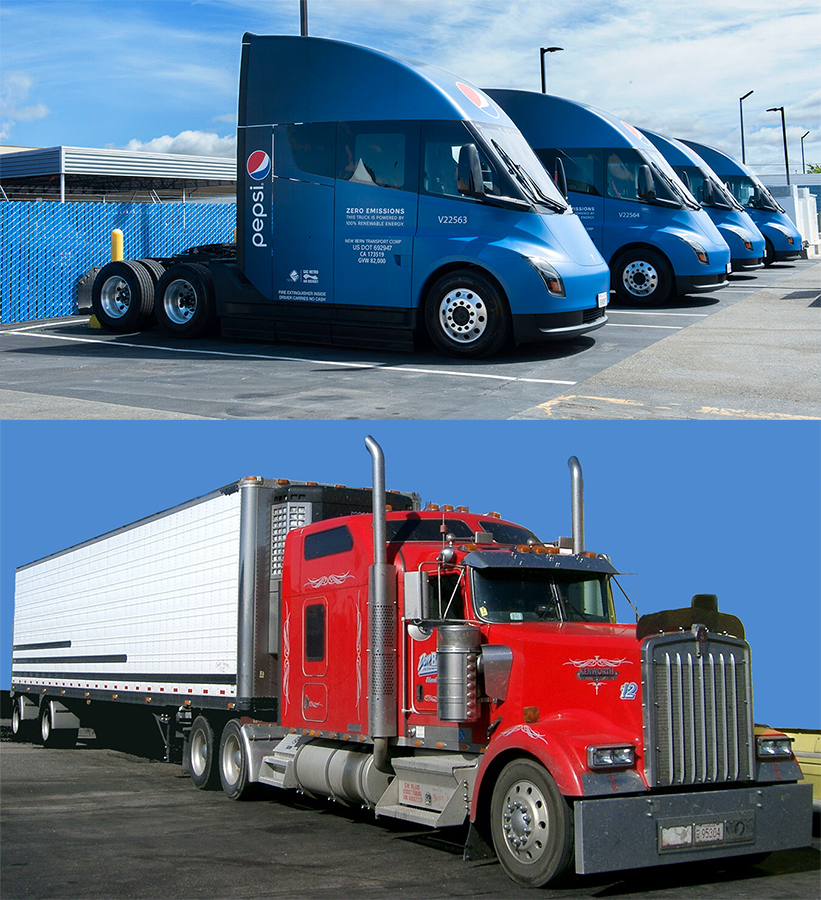
Emissions Comparison
The average diesel-powered semi gets about 7 MPG, and burning a gallon of diesel fuel releases about 23 pounds of CO2 into the atmosphere. The average semi truck drives 62,000 miles per year, so at 7 MPG the diesel-powered semis will release over 200,000 lbs of CO2 per year. That’s over 3 pounds of CO2 per mile driven.
According to our driver the Semi covers about 425 miles per 900 kWh pack = 2.11 kWh per mile. In 2022 California utilities released 0.481 pounds of CO2 into the atmosphere per kWh of electricity produced. Putting together the numbers and assuming 92% efficiency of Megachargers, the Semi will release just over one pound of CO2 per mile of driving – 68,642 pounds per year. That’s a 3X reduction in CO2 emissions by switching from diesel to electric powered Semis in California.
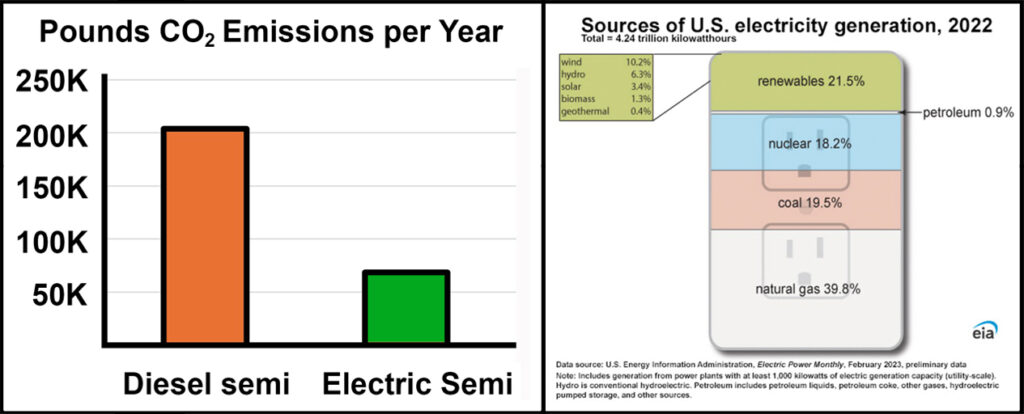
Operating costs are important for semi fleet owners and truck manufacturers are improving the efficiency of semis. Newer models are more aerodynamic and can get 10 MPG. But at the same time the U.S. electric grid is getting cleaner as utilities switch from coal to natural gas, and through the addition of renewable sources of power to the grid.
At the end of March, the Biden administration announced new rules that will strengthen the standards for allowable emissions heavy vehicles: buses, commercial vans and freight trucks. The rules will go into effect in 2027. Heavy vehicles are only 5% of vehicles on the road in the U.S., but account for 20% of tailpipe emissions. The new rules do not mandate technology, so manufacturers can meet the standards through any approach that reduces emissions: more efficient combustion engines, EVs like the Semi, etc. The new rules should increase demand for electric trucks like those made by Daimler, Tesla, and others, and will greatly reduce emissions.
Summary
The Semi is a very, very cool truck. It’s all about efficiency, utility, function, and form. It reduces carbon emissions, reduces total energy consumption, and will likely reduce operating costs. This vehicle gives me confidence in Tesla and other manufacturers producing electric-powered rigs, and makes me wonder if I should go back to driving trucks. On a related note the driver said he was told that autopilot/FSD is not coming to the Semi, and that Pepsi plans to complete the switch to all-electric trucks by 2029 – so there will be jobs for drivers….

